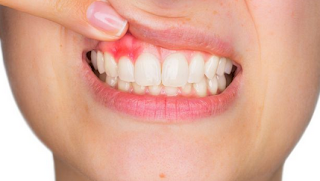Gum Abscess Disease
A gum abscess is also known by the term gingiva abscess. In general, abscesses are infections caused by bacteria. This bacterial infection causes inflammation and forms a cavity in the gums that contain the pus.
This kind of abscess can happen in all organs of the body. Starting from the oral cavity, vagina, armpits, anus up to the spine. Meanwhile, a gum abscess is one of the five types of abscesses caused by teeth. Other types of abscesses are periapical abscesses and abscesses in the tooth itself.
A gum abscess is located starting at the bottom of the gum line and forming a lump.
Causes of gum Abscess
Many things can cause gum abscess. Some of these are due to bacterial infections derived from cavities, rubbing teeth too tightly, broken teeth, leftover foods tucked away in gums or on the condition of bleeding gums.
Also, injuries caused by accident even excessive tooth bracket pressure can cause gum abscess. In fact, according to research, the habits of children who often bite fingers can cause gum abscesses.
Symptoms of gum Abscess
Usually, the abscess of gum will cause pulsating pain in the infected area and feels very sensitive. The sufferer will experience a variety of complaints ranging from mild pain, then getting sick, then turning into a great pain in a short time. The gums around the infected tooth will appear swollen even to the cheek area.
If gum abscesses are not treated then the infection can spread through to the jaw bone and cause swelling around the tissues. At this stage, the patient will be seen experiencing swelling in his face. The face will look asymmetrical and there will also be swelling of the glands in the neck area.
Infections can sometimes also spread to wider surrounding tissue. This may cause permanent damage to the tissues surrounding the tooth.
In severe stages, gum abscesses can trigger the onset of nausea, vomiting, fever, and difficulty swallowing. Other symptoms that can also accompany the smell of mouth and mouth feel bad.
Gum Abscess Diagnosis
Gum abscesses can be found through thorough dental and oral examinations. Usually, a new gum abscess patient has been checked after the abscess he experienced is at the intermediate stage and cannot be overcome with simple care at home.
Through a complete examination of the dentist can determine if the condition is potentially for a more serious or not. It can also be noted if the condition requires an invasive action or only requires drug therapy.
Gum Abscess Treatment
Very mild gum abscesses can be treated easily. Simply by compressing the ice, giving medication, and can be supplemented by the gargle of warm saltwater. Even in some cases, gum abscesses can rupture themselves without causing pain.
Gum abscesses are heavier and have occurred repeatedly requiring treatment with antibiotics and medications. If the gum abscess condition deteriorates, then usually the doctor will recommend some treatment steps.
One of them is the act of spending pus from abscesses. This step can be done by giving an anesthetic injection by the dentist.
This action is not advised to be done alone at home for safety and hygiene reasons. Trying to do it yourself at home is prone to damage the surrounding tissue and make the inflammation of the gum abscess gain weight.
Another step that can be done in a very heavy condition is with the removal of the tooth affected by the abscess. It is intended to prevent infections from spreading to other teeth and also as access to pus production.
Prevention of gum Abscess
In principle, the best way to overcome abscesses is to prevent abscesses from scratch. The following steps can be done:
- Take regular checkups and teeth cleaning to the dentist once every six months.
- Apply healthy habits by brushing your teeth twice a day. This prevents the rest of the food from sticking too long to the teeth or gaps between the teeth.
- If you find a lump in the gums that do not disappear within three days, you should directly consult your dentist. Do not delay until the condition deteriorates.
